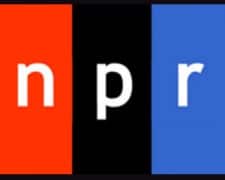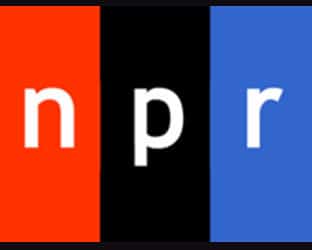 NPR launched an integrated advertising campaign in four markets this month to drive visibility and grow the number of listeners who tune in to NPR programming on public radio stations, in the first effort of its kind in the organization’s 42-year history. The goal of the three-month campaign is to grow the pilot stations’ weekly radio audience and to draw more listeners to sample their audio streams.
NPR launched an integrated advertising campaign in four markets this month to drive visibility and grow the number of listeners who tune in to NPR programming on public radio stations, in the first effort of its kind in the organization’s 42-year history. The goal of the three-month campaign is to grow the pilot stations’ weekly radio audience and to draw more listeners to sample their audio streams.
“While 34 million people tune into NPR stations every week, research has shown that there are millions more who are likely to appreciate NPR programming,” said Emma Carrasco, NPR Chief Marketing Officer. “These potential listeners want to hear stories about what is going on around the world and across the nation from journalists they can trust, and they want to understand a variety of perspectives. This campaign draws attention to the unique option that NPR provides.”
Participating stations vary by size and region, and include KERA Dallas/Fort Worth, WFYI-Indianapolis, WMFE-Orlando, and KPBS-San Diego.
A combination of billboards, rail, print and digital ads are currently running or slated to run in these markets soon. TV spots and more social media are on the way. Following the campaign, NPR will evaluate its effectiveness, seek additional funding and apply what was learned to future campaigns in other market areas.
All of the stations are growing and establishing themselves as news and information resources on-air and online for their communities. The marketing campaign is funded by a $750,000 grant from the Ford Foundation, long a supporter of NPR and public radio stations across the nation.
Following a competitive RFP process last year, NPR selected Planit, a branding and communications agency based in Baltimore, to develop the strategy and the creative. Based on an analysis of audience research, adults 25-44 with at least some college education, who reside or work in the listening area of the stations in these four markets were identified as the target market.
The creative features attention-grabbing (and stereotype-breaking) messages about who listens to NPR. Each ad includes the station call letters and frequency and with the URL www.InterestingRadio.com where listeners can stream and/or pick and share their own “RadioType.”
NPR has worked with other agencies in the past to develop branding and awareness campaigns for station use, but this is the first time that funding to purchase media and pay other costs has been part of the effort.
RBR-TVBR observation: The good news here is the funding is not coming directly out of the stations’ listener donation coffers. If it did, some donors would probably question why their contribution was not used to pay the staff locally and go toward better programming, the electric bill, etc…





